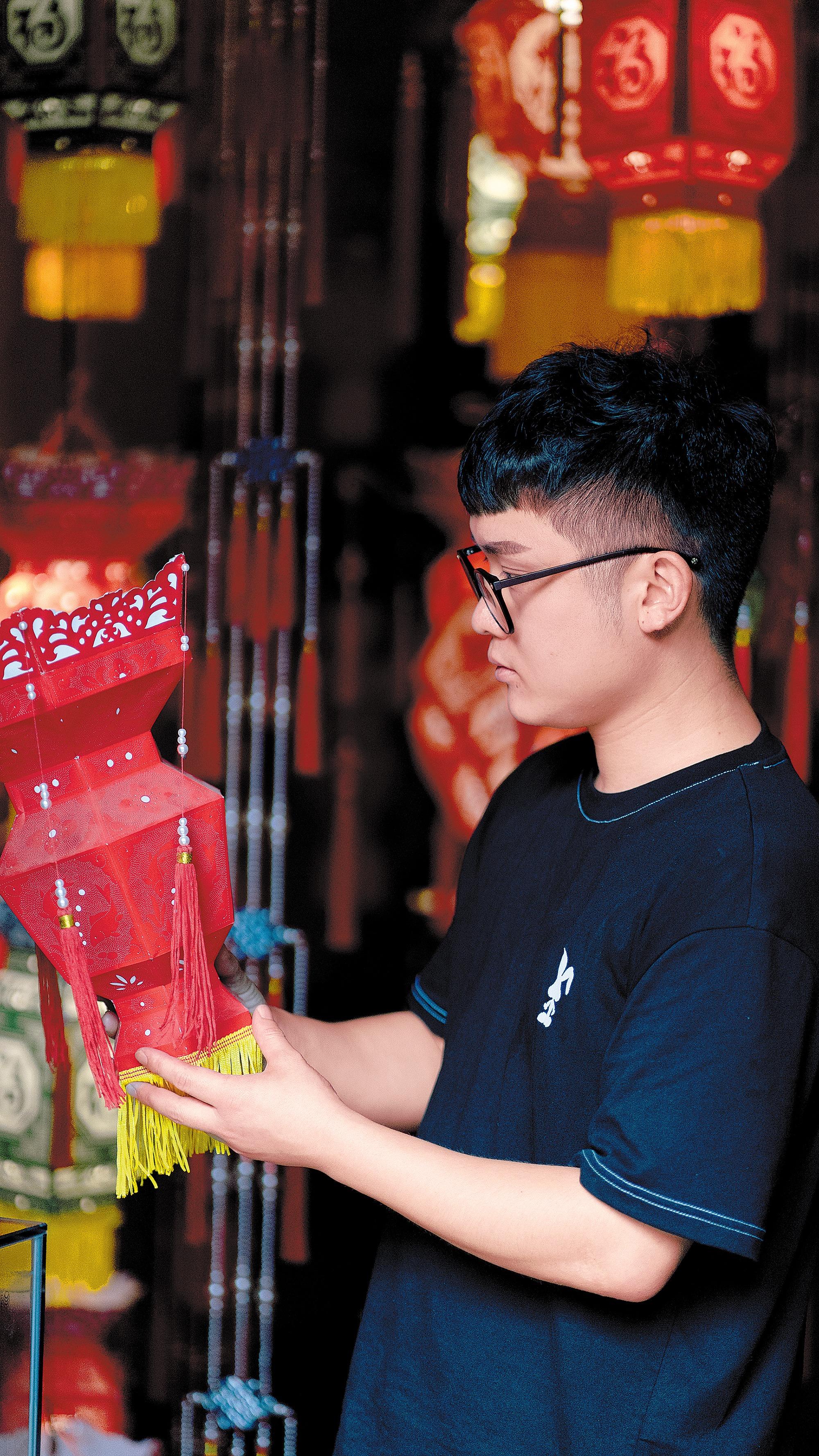 Xu Bin is devoted to innovative lantern making. (PROVIDED TO CHINA DAILY)
Xu Bin is devoted to innovative lantern making. (PROVIDED TO CHINA DAILY)
When the night draws in at the Jardin d'Acclimatation park in the north of Paris, a dazzling and fantastical world of colorful animals and plants comes alive.
Since mid-December, visitors to the park have been transported into a world of ancient Eastern mythology through an immersive sound-and-light show.
We tapped deep into the cultural classic that has a history of more than 2,000 years and distilled its essence before creating a series of lantern designs.
Chen Jia, chief cultural officer of Yuyuan Inc
Featuring 2,000 fabulous traditional-style lanterns shipped from China, the French Yuyuan Lantern Festival, developed by Yuyuan, the well-known traditional Chinese-style garden in Shanghai, has kicked off the 2024 China-France Year of Culture and Tourism.
In keeping with the arrival of the Year of the Dragon, the makers of the traditional-style lanterns have been inspired by a variety of Chinese dragon totems and mythical creatures from the ancient Shanhaijing (Classics of Mountains and Seas), says Chen Jia, chief cultural officer of Yuyuan Inc that is in charge of the show.
Each of the divine creatures depicted has unique cultural and spiritual significance.
"We tapped deep into the cultural classic that has a history of more than 2,000 years and distilled its essence before creating a series of lantern designs," Chen says.
The Spirits of Mountains and Seas lantern set is rendered as a dynamic series in which mythical fish are transfigured into big birds after jumping out of water to symbolize lofty ideals and aspirations, while dragons are fashioned as warriors to indicate courage and strength.
At the Leap of the Fish in the Dragon's Gate section, a soaring dragon is endowed with a long neck and wings, breaking through the waves.
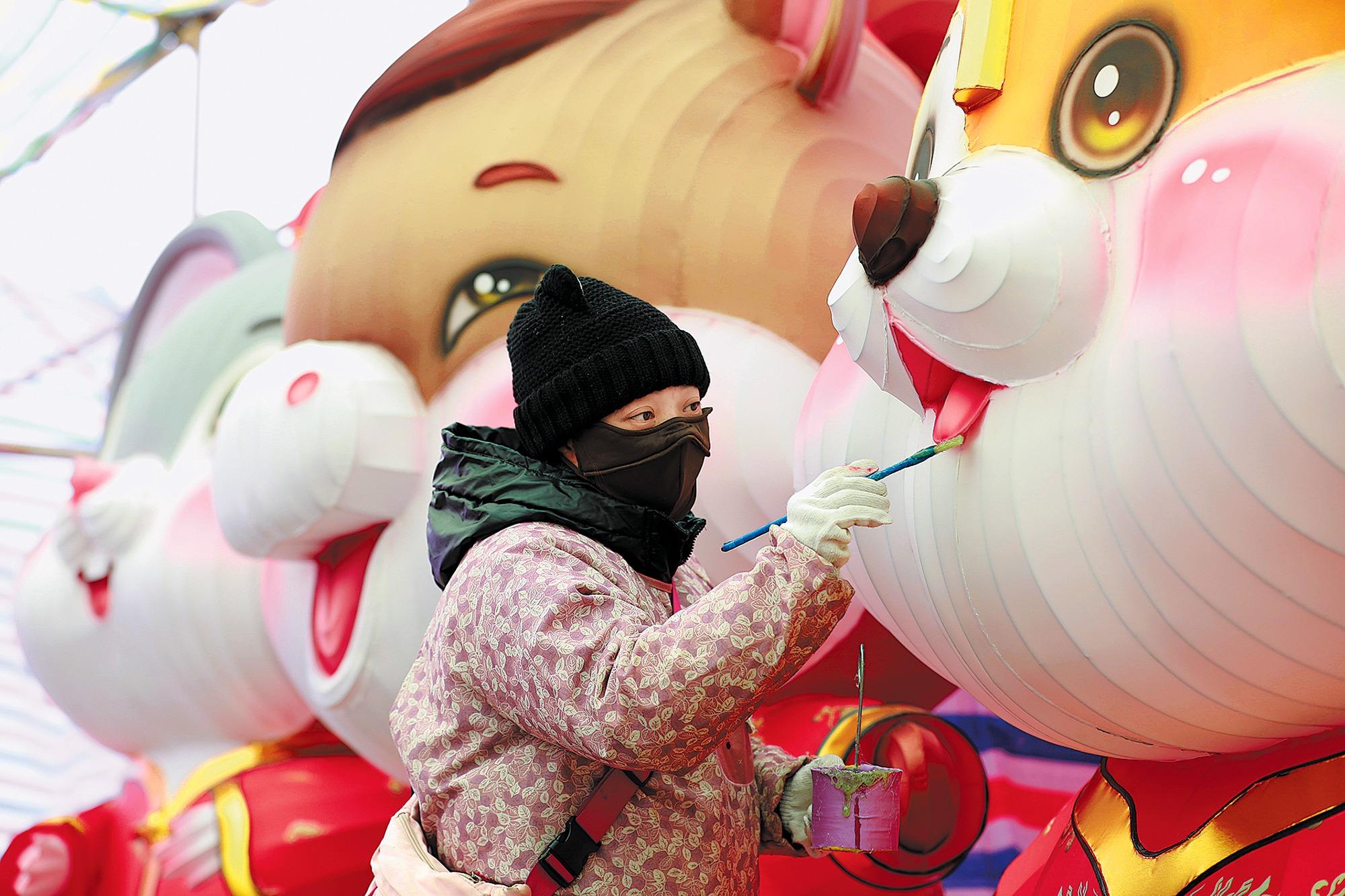 A lantern showcase is about to open in Huai'an, Jiangsu province. (PROVIDED TO CHINA DAILY)
A lantern showcase is about to open in Huai'an, Jiangsu province. (PROVIDED TO CHINA DAILY)
The image is inspired by the Hetu (Yellow River Chart) and the Luoshu (Inscription of the Luohe River), two cosmological diagrams used in ancient China.
"It showcases the positive, open, and dynamic aspects of Chinese culture, expressing China's willingness to develop together with the world," Chen explains.
Other innovative highlights include the White Deer section. It features a majestic white deer leading a group of fawns, making for a harmonious and heartwarming scene.
"The white deer, phonetically associated with 'hundred blessings' in Chinese, carries auspicious and abundant connotations, while the overall lantern design provides a tranquil and delightful visual experience, conveying the kindness and benevolence at the core of Chinese culture," Chen says.
Additionally, the lantern show incorporates a multitude of elements from ancient Chinese culture, including architecture, sculptures, paintings and costumes.
"Such elements as the flying dragons are commonly seen in ancient paintings and sculptures, so are the coiling dragons from traditional Chinese architectural pillars and cornices," Chen says.
These dragon-related elements are interwoven into the gateways, pathways, and lawns of the Parisian park and enable visitors to feel the festive atmosphere of the Year of the Dragon, she says.
Modern technology, such as "find-out-more" QR codes on the logo of each set of lanterns, has also been employed to enable visitors to enjoy a more immersive experience.
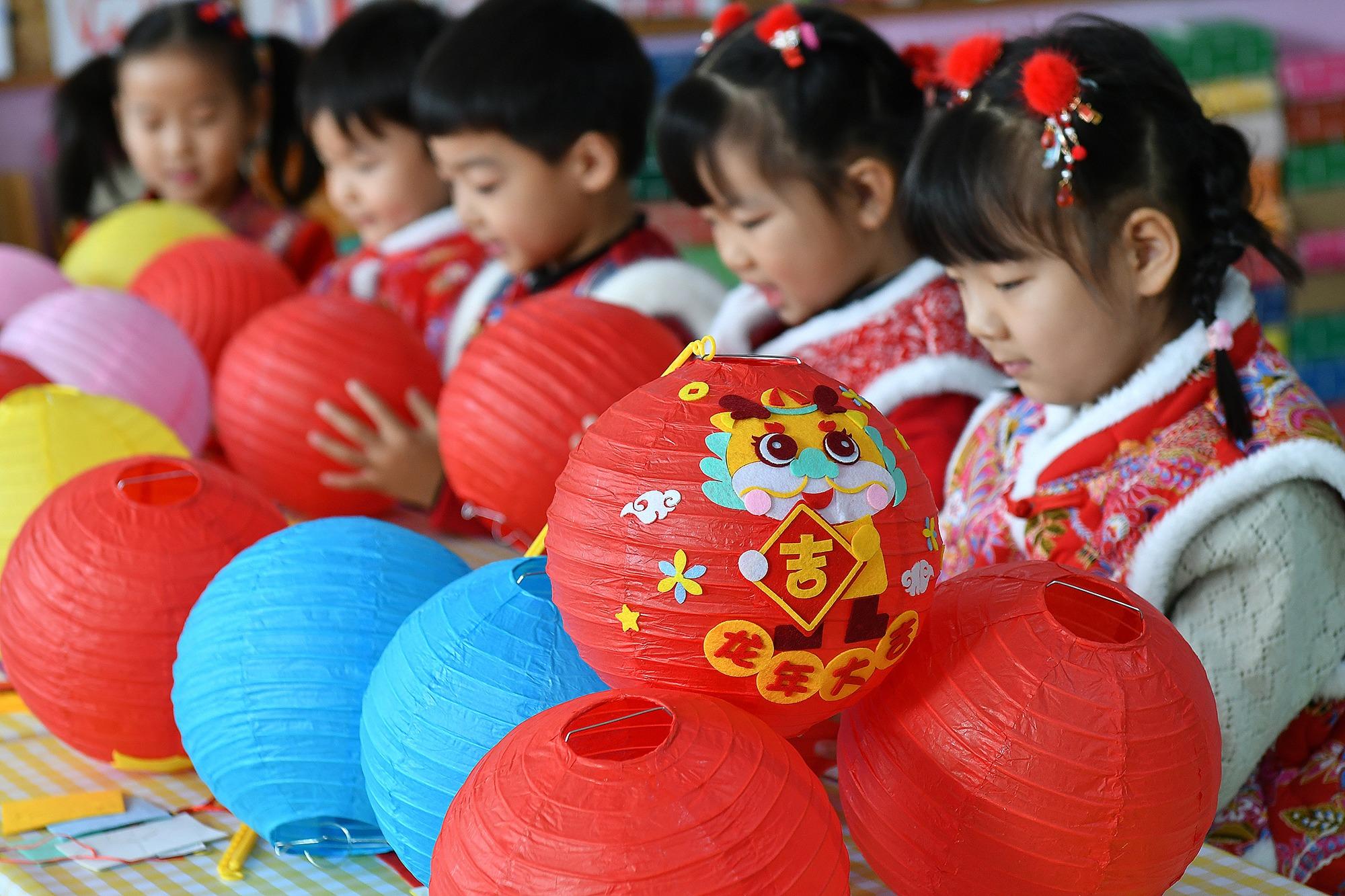 Children learn to make lanterns in Yantai, Shandong province. (PROVIDED TO CHINA DAILY)
Children learn to make lanterns in Yantai, Shandong province. (PROVIDED TO CHINA DAILY)
Pieced and pierced
The French lantern show is just one of the ways in which traditional Chinese lanterns are gaining a new lease on life.
In Xuzhai village, Dongyang city of East China's Zhejiang province, lantern maker Xu Bin has added a new dimension to needle-pierced frameless lanterns, an intangible cultural heritage.
With documented records dating back to the Tang Dynasty (618-907), the lanterns are made by pasting different-sized and shaped pieces of paper together. Through the balanced application of glued paper, they retain their form without any internal frame.
Various patterns are formed by using a needle to prick surface of each lantern, and the thickness and density of the needle holes have strict requirements for precision and attention to detail.
The light of the lanterns shines through the myriad small holes, creating a delicate and translucent effect, which had Xu under a spell as a youngster when he watched a local "bench dragon "lantern show in 2000.
The pierced lanterns were fashioned on long benches before local residents carried them in parades during festivities. It was the first time the traditional performance resumed after years of interruption.
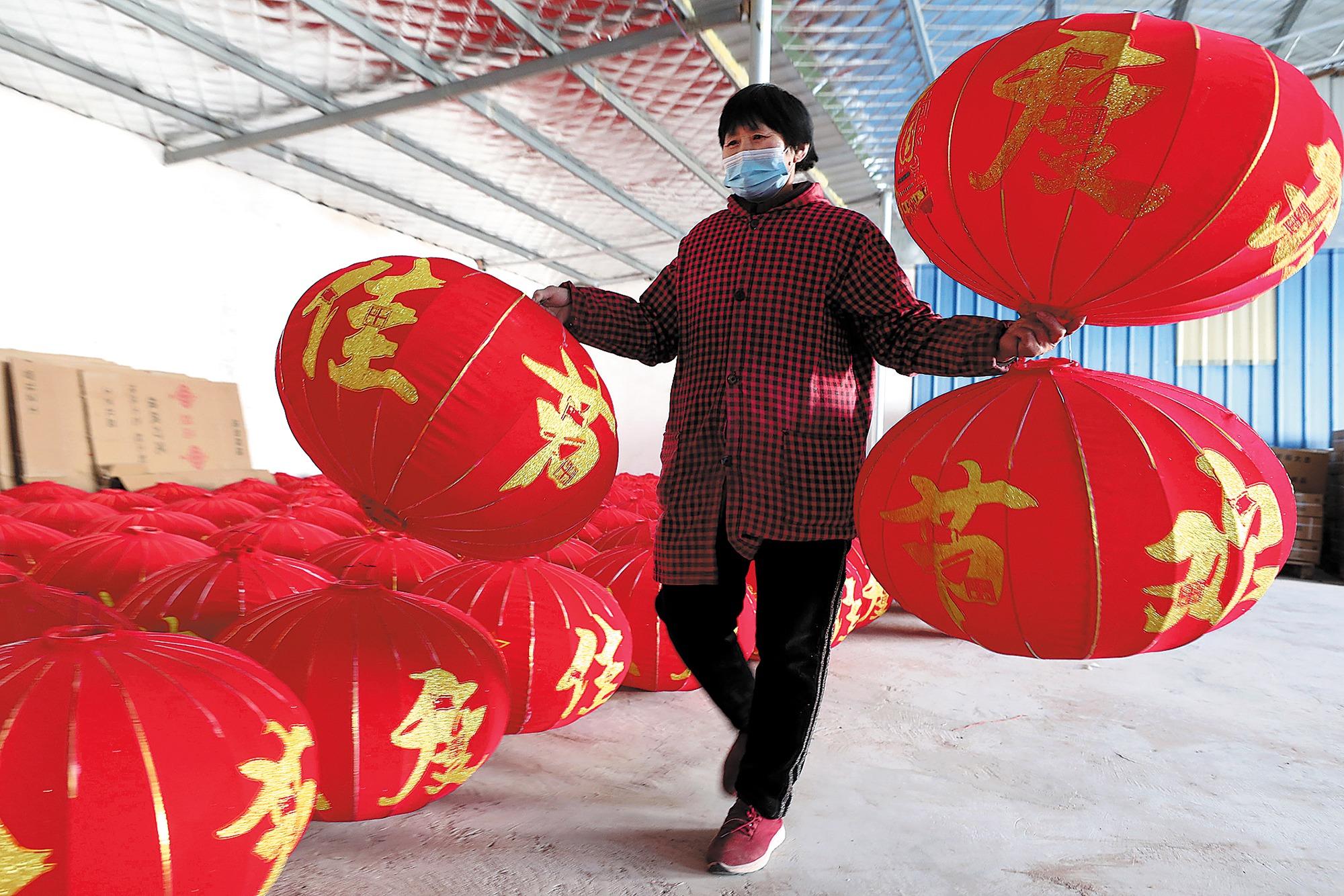 Red lanterns are popular in Spring Festival. (PROVIDED TO CHINA DAILY)
Red lanterns are popular in Spring Festival. (PROVIDED TO CHINA DAILY)
Xu started to learn how to make the lanterns from his mother who was a dab hand at the craft. It didn't take long before he was creating mini-sized pierced frameless lanterns at his art class in primary school.
In 2008, one of his lanterns won the gold prize at a traditional lantern making competition jointly hosted by Zhejiang and Jiangsu provinces and Shanghai, which inspired him to apply more innovative elements into the traditional artwork.
He takes pride in having introduced more intricate needlework to the craft with the incorporation of landscape and figurative elements for the pierced designs rather than the relatively simple auspicious patterns that used to be the norm.
"For outlining, I use a pointed needle, delicately creating the contours with dotted lines. The primary image is fashioned through the use of the 'coiling dragon' stitching, spiraling outward in a way similar to stitching a shoe sole," he explains.
The blank spaces are filled with triangular patterns using this stitching technique.
"The density of the stitches requires careful attention. If it's too sparse, the lines lack coherence. But if it is too dense, the paper may be punctured," he explains.
"For landscape paintings, varied stitching techniques with different densities are employed to depict elements such as water and mist."
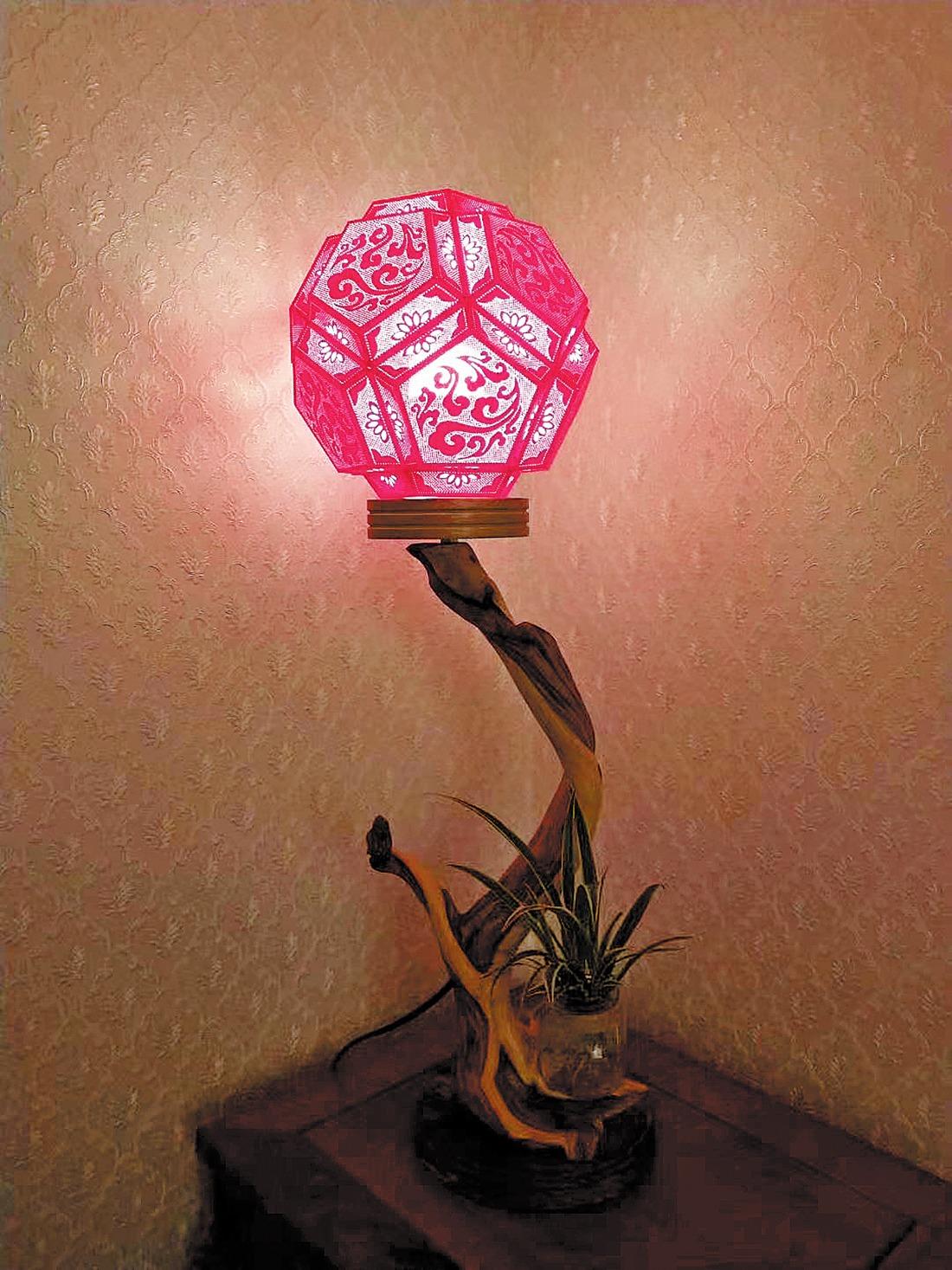 A lantern created by Xu. (PROVIDED TO CHINA DAILY)
A lantern created by Xu. (PROVIDED TO CHINA DAILY)
Materials and designs
Xu has also applied other Chinese cultural elements, such as paper-cuts and fine brushwork, to the local lanterns, and he has also incorporated the use of new materials, such as silk.
The young man has also applied his college education to upgrading the lanterns' structures.
"A layer of cotton paper or xuanzhi (rice paper) is mounted onto the glossy paper to give it thickness, so it can better stand without a supporting frame," he says.
"However, it cannot be too thick, or the lantern won't be translucent."
Through precise calculations, Xu has managed to enhance the lanterns' aesthetics and sturdiness and create lanterns with more layers of texture.
Due to technological limitations, traditional needle-pierced frameless lanterns typically range in size from 20 to 40 centimeters. However, Xu can create lanterns that reach a height of 1.2 meters.
He says he has drawn inspiration from the practice of adding a horizontal beam when building houses in the countryside. So, when increasing the height of the lanterns, he applies architectural principles by adding a horizontal beam, which makes the lanterns sturdier.
At the same time, he has crafted clearer lines through meticulous planning of the cutting and pasting.
"The design of the border involves the use of geometric knowledge, transitioning from solid geometry to plane geometry, and then back to solid geometry. Fortunately, I am particularly sensitive to this area, and my learning in this aspect has been quite helpful," he says.
Now, Xu has opened an online shop selling his lanterns, and received orders from home and abroad.
"People will place orders (for the lanterns) as a prop for a photo shoot wearing traditional costumes, and many tourist attractions use them for decorations," he says.
Xu has also developed an innovative kit that enables amateurs to enjoy the fun of putting together a pierced frameless lantern.
He says it's his wish to improve the local lanterns, so they can be better appreciated by the modern world and used in more occasions beyond the holidays.
He has already adapted some lanterns into lamps to go with modern home settings.
As his innovative works have been collected by various museums in recent years, Xu says he feels more motivated to find opportunities to combine novel ideas with the traditional craft.


